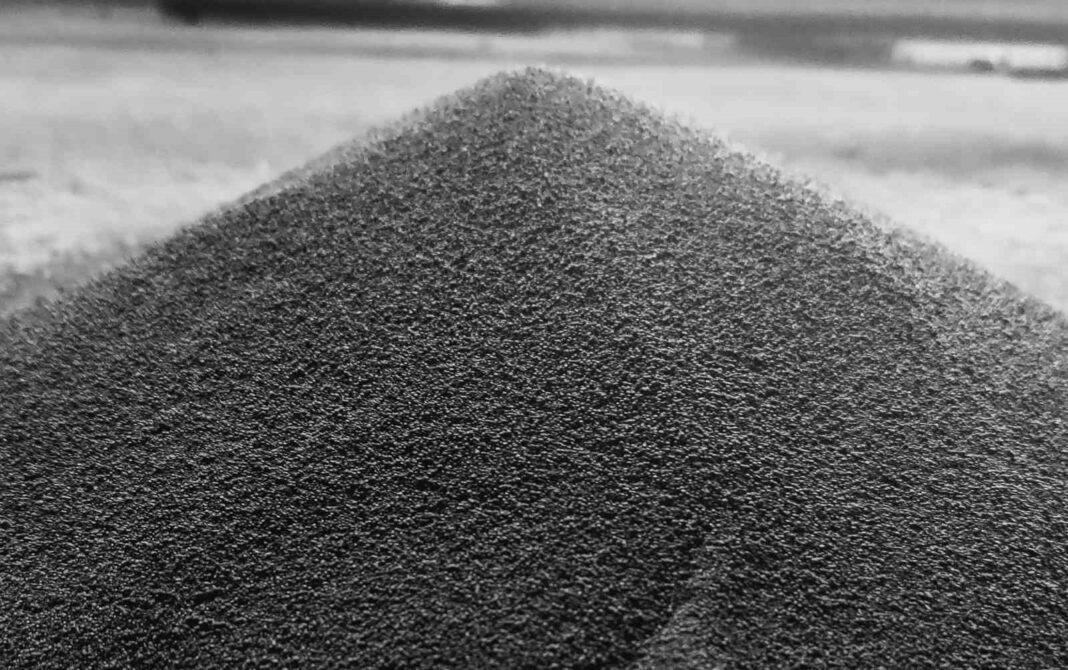Mould flux consumption is dependent on various parameters such as casting conditions, mould powder composition, slag characteristics and process parameters etc.
Mould Dimensions:
The frictional force is found to increase with the increase in the surface area of the mould. Neumann proposed the relation between the powder consumption and a term R* which represents the ratio of the surface area to volume and can be alternatively represented by the ratio of the surface area of the shell to the volume of the steel in the mould.

R*=2(w + t) /w. t
Typical R* values are 10-18 for blooms, 22-30 for billets, and 40 for thin slabs. Thus it is quite evident from the equations that the powder consumption increases with an increase in the mould dimensions.
Effect of Casting Speed
Wolf proposed a relation between the powder consumption and the casting speed which is

Thus the mould flux consumption decreases with the increase in the casting speed.
He further proposed an optimum range for casting (The minimum friction and optimum horizontal heat flux) taking into account variables like viscosity and casting speed. The equation is

Slag viscosity
The powder consumption increases with the decrease in viscosity. For high speed casting value of Qs= 0.1 kg /m2 is recommended. Values for non -Newtonian slags have been compared with that of conventional slags( Q conv < Q non-Newtonian) since the high shear forces in the infiltration region results in reduction of their viscosity.
Oscillation parameters
Maeda proposed an equation:

Similarly, Kobayashi reported an equation involving a number of variables (casting speed, frequency, and positive strip time).

However, there is no agreement on the effects of oscillation parameters on the powder consumption. Some studies suggest Qs decrease with increasing frequency while other studies show a reverse relation. Some workers considered slag infiltration to occur during negative strip time which results in increased pressure produced by the descending slag rim. Conversely, slag inflow is considered to be difficult during negative strip time(tn) since the channel gets blocked by the bending of the shell in this period.
Wolf after examining plant data concluded that the increase in stroke increases the powder consumption. While non sinusoidal oscillation can be associated with increased powder consumption.
Solidification or break temperature
An increase in the break temperature would correspond to less liquid film thickness and a higher solid film thickness which will lead to less powder consumption. The horizontal heat flux increases gradually during the period of oscillation when the mould is descending. The increased heat flux melts the solid slag which results in melting of the slag thereby resulting in an increase of the liquid slag thickness and a gradual decrease in the solid slag thickness. The process gets reversed when the mould was ascending. Thus the liquid layer increases at the expense of the solid layer when the heat flux was increasing and decreases when the heat flux was decreasing.
Melting rate
The powder consumption increases with the increase in the slag pool depth which in turn is affected by the melting rate. C is the main element that controls the melting rate. Thus manipulating the percentage of free carbon can give the desired melting rate or adequate slag pool depth.
Superheat
An increase in superheat will have a direct effect on the powder consumption. It has been observed that an increase in superheat will lead to higher powder consumption due to the increase in slag temperature and formation of a lower viscosity slag.
Argon flow
An increase in argon flow causes more convection which leads to better vertical thermal flux. This causes higher melting rate that corresponds to higher powder consumption. Additionally higher Ar flow changes the flow pattern inside the mould and higher turbulence can subsequently increase powder consumption.
High Viscosity powders
High viscosity powders are developed for the casting of billets and for casting steel grades containing Ti. These high viscosity powders combat the slag entrapment (which occurs due to meniscus turbulence) and reduce the SEN erosion. The powder consumption is quite low (less distance between the centreline to the corner and low R* values > 22). It has been suggested that these high-viscosity slags will form supercooled liquids rather than crystallites during cooling. This supercooled liquid moves in response to any stress applied by the ferrostatic pressure, the downward movement of the shell, or the oscillating motion of the mould, hence the slag (supercooled liquid) will supply lubrication to the shell.
Electromagnetic braking
The application of electromagnetic braking results in a 30% decrease in vertical heat transfer from steel and a 10% increase in meniscus temperature. This increased temperature results in lower slag viscosity and higher powder consumption.
Other Factors:
The vertical heat transfer become low for some high Al and Mn steel owing to their low melting temperatures which leads to insufficient melting of mould powder. Liquid slag feeding technology has been developed which feeds the liquid slag to the steel surface. It is observed that powder consumption increases with liquid slag feeding technology.
The powder consumption decreases during the casting of steel containing Ti. This is because of the formation of TiN or Ti(C, N) which has low solubility in the slag pool and thus tends to exist as solid particles. These particles agglomerate through turbulent collisions and the agglomerates restrict the slag flow when they are sited in the mouth of the slag/mould channel. The solid particles also increase the slag viscosity and thus decrease powder consumption, Qs. Alternatively, TiO2 particles can form perovskite (CaO.TiO2) which has a melting temperature and thus reduces both the thickness of the liquid slag film and Qs. It is necessary to keep the basicity,(CaO/SiO2) <1 to avoid perovskite formation.



